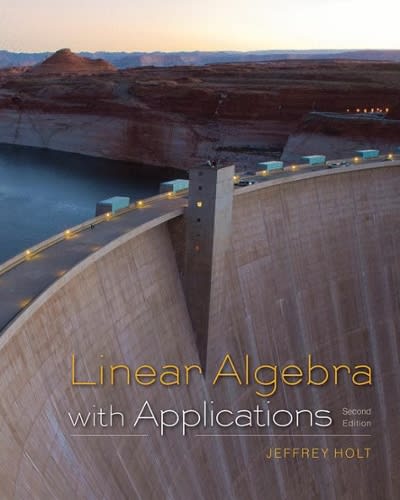Question
4.Silicon Valley Transport Commission (SVTC) has an armada of support vehicles that incorporates vehicles, vans, and trucks. SVTC is at present assessing four unique ways
4.Silicon Valley Transport Commission (SVTC) has an armada of support vehicles that incorporates vehicles, vans, and trucks. SVTC is at present assessing four unique ways to deal with assistance them keep up their armada of vehicles and vans effectively at the most reduced conceivable expense. Their choices are: (1) No preventive support at all and fix vehicle parts when they fall flat; (2) Take oil tests at standard spans and play out whatever preventive upkeep is shown by the oil examination; (3) Perform an oil change consistently on every vehicle and perform fixes when required; (4) perform oil changes at customary stretches, take oil tests routinely, and perform support fixes as demonstrated by the example investigation.
Choice #1 costs nothing to carry out and brings about two potential results: There is a .10 likelihood that an imperfect part will happen, requiring crisis upkeep at an expense of $1,200, or quite possibly no deformities will happen and no support will be fundamental.
Alternative #2 expenses $20 to carry out, and there is a .10 likelihood that the upkeep team will find an imperfect part. In the event that the group really tracks down a flawed part, there is a .70 likelihood that the example will accurately distinguish it, bringing about preventive support at an expense of $500. Notwithstanding, there is a .30 likelihood that the example won't recognize the surrender and demonstrate that all is well, bringing about crisis support later at an expense of $1,200. Then again, if there are in reality no imperfections, there is a .20 likelihood that the example will wrongly demonstrate that there is a deformity, bringing about pointless support at an expense of $250. There is an .80 likelihood that the example will effectively show that there are no imperfections, bringing about no upkeep and no expenses.
Alternative #3 expenses $14.80 to carry out and has two results: a .04 likelihood of a damaged part, which will require crisis support at an expense of $1,200, and a possibility that no deformities will happen, henceforth no requirement for upkeep and no expense exhausted.
;44;
Choice #4 expenses $34.80 to carry out and brings about similar probabilities of imperfections and no deformities as Option #3. On the off chance that there is an imperfect part, there is a .70 likelihood that the example will identify it and $500 in preventive support costs will be brought about. On the other hand, there is a .30 likelihood that the example won't distinguish the imperfection, bringing about crisis support at an expense of $1,200. In the event that there is no imperfection, there is a .20 likelihood that the example will show that there is a deformity, bringing about a superfluous support cost of $250, and there is an .80 likelihood that the example will effectively demonstrate no deformities, bringing about no expense.
Utilizing choice investigation, the sum distinction between the normal upsides of Option #3 and Option #4 is $________.
Step by Step Solution
There are 3 Steps involved in it
Step: 1

Get Instant Access to Expert-Tailored Solutions
See step-by-step solutions with expert insights and AI powered tools for academic success
Step: 2

Step: 3

Ace Your Homework with AI
Get the answers you need in no time with our AI-driven, step-by-step assistance
Get Started


